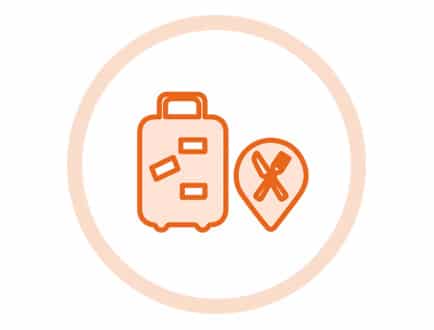When, Where and Why?
When it comes to your organisation’s news outreach strategy, nothing is more important than the humble press release. Designed to build brand excitement and provide compact answers to essential questions about what you do, press releases are a key means of getting publicity for your organisation. Whether you’re an entrepreneur launching your own start-up or a marketing director at a large organisation, mastering the art of the press release is essential to PR success. Learn to write a compelling press release, and you’ll be able to get media outlets to pay attention to what your brand is doing whenever you need publicity.
Press releases can be used by any type of organisation. For-profit companies, non-profit organisations, schools, government agencies, churches, hospitals and more all use press releases to communicate information to the public. Originally created to combat biased propaganda and provide accurate, easy-to-access information instead, the press release has become the primary means for organisations to communicate with media outlets today.
Understanding How to Use a Press Release
All good press releases follow a basic format and provide a distinct set of information to readers. They tend to run between 400 and 600 words in length. Following a standard press release format is essential because it communicates to readers that you know what you’re doing and that you value their time. Anyone at a business, an organisation, an agency, a school or another group can write a press release, but they’re most often prepared by marketing or public relations professionals.
It’s essential to know that a press release isn’t meant for consumption by the general public. Instead, press releases are sent to media outlets and specific writers who might want to cover an event, a service or a product launch. The point of a press release is to get a professional writer to promote your brand for you. Depending on your market and the nature of your organisation, you might send your press release to:
Depending on your market and the nature of your organisation, you might send your press release to:
In short, press releases are sent to people who can create informative news pieces that talk about your brand or organisation. However, press releases themselves aren’t structured news pieces. Think of them as a crib sheet that guides writers as they create information pieces for consumers. In this sense, press releases are designed to convey highly specific information without bias. Remember that press releases originate from organisations instead of independent journalists. They provide detailed information without the use of superlatives or narratives.
Looking for content writers? Use Textbroker to craft your perfect press release
With over 100,000 authors we can help you create the perfect press release.
A Closer Look: Press Release vs. News Piece
Understanding how a press release and news piece differ can be challenging. Here’s a short example of what a press release about an upcoming lecture looks like versus what a news piece about the same lecture might look like.
Public Arts Lecture: Press Release Snippet
The Colour Factory will host Dr. Rosy Green on Thursday, May 8, for a presentation about the role of exterior colour schemes in public spaces. Dr. Green’s lecture will touch on urban planning, colour psychology and shifts in public perception of colour over the past decade. Dr. Green is a professor emeritus at The Gray University who studies art and design in public spaces.
Public Arts Lecture: News Piece Snippet
Despite stormy skies, a crowd of hundreds gathered at the outdoor pavilion at The Colour Factory last Thursday to hear renowned public art and colour expert Dr. Rosy Green talk about exterior colour schemes in public spaces. A professor emeritus at The Gray University, Dr. Green provided an informed perspective on a topic many audience members had previously known little about.
Why Press Releases Are a Potent PR Tool
Getting the word out about your organisation, products, services or happenings is important, but sending unsolicited emails to journalists is the PR equivalent of a shot in the dark. Busy writers at blogs and newspapers don’t have time to scan through random, unstructured emails. They want to receive high-value information in a format they can easily recognise.
A press release is the perfect choice because it’s exactly that. All journalists are familiar with this means of publicising a product, service, event or big organisational move. They know exactly where to look on the release for pertinent information. In addition to being a journalist-friendly format, a press release is budget-friendly, too. Press releases tend to have a very high ROI because they create significant publicity with very little financial output. Whether you write a release in-house or hire a freelancer to do so on your behalf, creating a press release costs significantly less than launching a new advertising campaign.
Audience access is also a big selling point of the press release. With a press release, you have the potential to reach a wide audience because the newspapers, blogs, radio stations and TV channels that you distribute the release to have already built a following. You don’t have to do the hard work of getting people invested in your brand to expose them to your products, services or other important news. The fact that press releases encourage sources outside your organisation to create high-value articles can also build brand prestige among sceptical consumers.
When Should You Use a Press Release?
Knowing when to use a press release is just as important as knowing how to use a press release. There are many scenarios where a release is valid. These include:
The market in which your organisation exists also dictates when it’s appropriate to send a release. If you work in a small market, you may be able to send press releases to announce changes in business hours, changes in what products your organisation stocks and other minor announcements. If your organisation is in a bigger market, you likely need to limit press releases only to more important announcements about bigger moves and changes. Remember that overusing press releases is a turn-off to journalists and will result in less coverage for your organisation as a whole.
Still searching for Press Release Authors?
Join over 53,000 customers worldwide and use Textbroker for your Press Release.
Press Release Formatting 101
Formatting your press release correctly ensures that journalists will recognise what it is and take it seriously. Every press release is composed of distinct parts. When journalists receive your release, they’ll scan it to find the information of greatest interest to their readers. If that information isn’t in the right place or your release is sloppy, it will likely get deleted or tossed in the trash.
It’s important to understand that there are some formatting differences depending on the outlet for which you’re preparing a press release. If you’re sending your release to a blog, a newspaper or another traditional media outlet, use the general formatting guidelines found in this whitepaper. If you’re distributing your release through PR Newswire or a similar service, review their specific guidelines and be sure that your press release meets them.
Every press release contains six distinct parts that must be written in a specific order. Including all of these parts is essential to clarity and efficacy. Check out this template for a working example of how a press release should be formatted.

Header
Think of your header as the title of your press release. It should provide a snapshot of what the press release is about. A great header engages the reader and builds excitement about the information to follow.

Dateline
The dateline of your press release lets the reader know where your organisation is located and the timeliness of the information. A properly formatted dateline looks like this:
Town or City, Country —Day Month, Year—
If your organisation is located in Glasgow, for instance, your dateline would look like this:
Glasgow, Scotland —8 May, 2017—
Organisations that use Associated Press (AP) Style generally write the city in the dateline in all capitals. There are also some cities that can stand alone according to AP Style, so you don’t need to follow them with the state or country. You can consult your AP Stylebook to find out which cities follow this rule.

Body
The body of your press release contains the meat of your announcement and should be divided into three parts.
The teaser comes right after the dateline. It is a two-to-three sentence introduction to your press release that hooks your reader and explains the gist of what your release is about.
The intro paragraph provides more details about the main subject of your press release. It offers any essential information about the specs of a product, the timing of an event and so on. If it was read on its own, this paragraph would cover all the main points of your announcement.
The main paragraph goes into further detail about the subject of your release. It might provide background information about the product or service. If you’re announcing a new hire or promotion, it would include in-depth information about the education, work history and qualifications of the individual. Think of this paragraph as the place to include details that add depth and character to your announcement.

Boilerplate
The boilerplate on a press release provides information about the organisation that issued the release. It might include the year of incorporation, line of business, area of service and other general information. Think of it as a two-to-three sentence “About Us” paragraph.

Contact Info
It’s essential that journalists who are interested in learning more about your organisation or announcement can get in touch with you. List your organisation’s mailing address as well as the phone number and email address of the contact for the story. You can also list your organisation’s website and links to social media profiles.

End Text
Because press releases are often transmitted electronically, you need a special mark to indicate the end of your press release. Traditionally, writers have used the mark “###” to close a press release.

Writing a Press Release: Best Practices
No matter the reason you’re writing a press release, it’s essential to remember that it should read as a professional document. It’s crucial that you use good grammar, spelling and formatting. It’s also critical that you write in a professional tone that journalists won’t perceive as biased. That means avoiding exaggerated claims about your products and services.
You should also avoid superlatives, which are words and phrases like “the best,” “the easiest,” “the most luxurious” and so on. Superlatives communicate bias and are a turnoff for journalists who want to decide for themselves the value of the product, service or event you’re promoting. Thankfully, eliminating superlatives is easy. Instead of “This product is the easiest thing for consumers to use,” say, “This product is designed with ease of use in mind.”
Essentials to Include in a Press Release
Following press release formatting guidelines will ensure that you have every portion of the release that journalists require. It’s also important to include other essentials that your reader will expect to see. These include some combination of:
What Should Be Left Out of a Press Release?
Including the wrong information in a press release can be off-putting to your readers. To keep your readers engaged, be sure that you’re making only one announcement per press release. For example, if your organisation is introducing a new product line and holding an upcoming special event, avoid putting both of these items in one press release. Each newsworthy item should receive its own release.
It’s also important to avoid talking about your competitors in a press release. Remember that a press release is designed to create publicity for your organisation. A journalist who wants to write a news piece after reading your release will do research into your competitors if necessary. Of course, it is OK to mention partnerships with other organisations if they are pertinent to the item that you’re announcing.

Your Press Release Checklist
A press release is made up of many different parts. Use the checklists below to ensure that you’ve nailed the formatting and that you’ve used the appropriate voice and style.
Formatting
Your press release should include:
Voice and Style
Make sure that your press release:
Creating Industry-Specific Press Releases
Following basic press release formatting guidelines will help you create a compelling release that journalists will take seriously. However, there may be special steps you can take to ensure that your press release also meets expectations in your industry. Check this list for your industry to find out what special considerations you should take when preparing your press release.
Automotive
Banking and Financial Services
Consumer Services
E-Commerce Businesses
Education
Health Care
Music, Film, Books, TV and Entertainment
Real Estate
Restaurants, Travel and Hospitality
Retail Businesses
Special Events
Technology
Distributing Your Press Release
Once you’ve crafted a compelling press release and carefully checked it for errors, you can send it to journalists, bloggers and media outlets. Develop a list of outlets that you want to target and then consult their websites to determine what requirements they have for press releases. Many media outlets will specify the contact to whom a release should be sent and the format in which they accept releases. Word documents, PDF documents and hyperlinked files are acceptable to many outlets.
It can be tempting to send your press release to every media outlet in your geographic area, but it’s worth your while to target your release to only those outlets that are truly interested in a given story. For example, if you’re hosting a live event, be sure to distribute the release to publications that have a community calendar or run event announcements. Avoid sending the release to outlets that do not publicise events. Remember that sending too many releases to a journalist can have negative outcomes.
You can also use a press release distribution site such as PR Newswire to disseminate your release. This can be a good option if your business is in a very saturated market or you’ve had problems getting releases picked up by journalists in the past.
Does Your Press Release Need Strong Search Engine Optimisation?
If you handle marketing or publicity duties for your organisation, you might be familiar with search engine optimisation SEO techniques. These include the use of keywords, links and other high-quality information that helps Google and other search engines rank your website or content. One of the most frequent questions organisation leaders have about press releases is whether SEO tools need to be utilised in press releases.
In general, SEO isn’t necessary for a press release. The journalists and bloggers who read your press release don’t rely on search software. Instead, they rely on strong headlines and teaser paragraphs to determine if the release is relevant to their audience. Focus on creating a compelling lead-in to your release to capture audience attention. Don’t worry about sprinkling keywords throughout your release.
Of course, there are caveats to this rule. If you’re planning to submit your press release through PR Newswire or another online distribution service, you’ll likely need to include SEO elements so that journalists and bloggers can locate your release. You should also consider incorporating SEO strategies if you’ll be posting the press release on your organisation’s website as a news item.
A Special Note about PR Newswire
PR Newswire is one of the largest online press release distribution services. If you’re interested in distributing a release through PR Newswire, you can format it like any other press release, but you will also need to include tags. In general, press releases for this site should have a title tag, meta tag and meta keywords included. This helps PR Newswire sort your release, and it will increase the likelihood of it being discovered by readers.
PR Newswire encourages press release writers to include embedded images or videos with every release. Because they’re viewed by an online audience, these press releases tend to have better reach if they include rich content. PR Newswire also encourages customers to include a call to action (CTA) in their press releases. This is a substantial departure from a traditional press release, where a CTA is frowned upon. The CTA should link to your organisation’s website or email address.
Press Releases: A Strategy for Success
A well-written press release can be one of the most potent tools in your PR repertoire. Mastering the proper formatting and voice for your releases ensures that they will be taken seriously by journalists and land your organisation the coverage it deserves. Develop a press release strategy that focuses on building buzz for newsworthy items and creating brand prestige. Keep in mind that building relationships with journalists, bloggers and media outlets should also be at the centre of your press release strategy. Pouring time and a bit of money into your press release program is a smart investment that makes good sense no matter the nature of your organisation.
Still searching for the Right Press Release Authors?
Join over 53,000 customers worldwide and use Textbroker for your Press Release.












No comments available